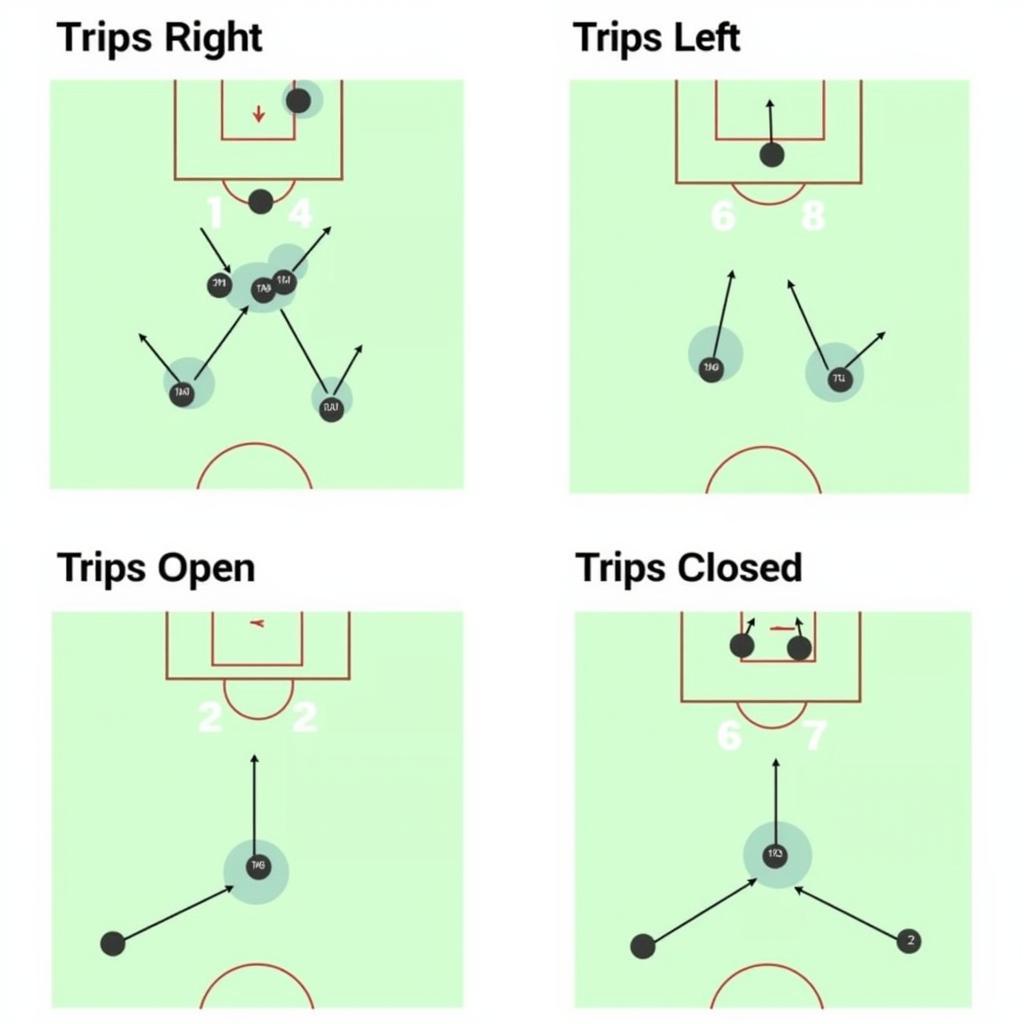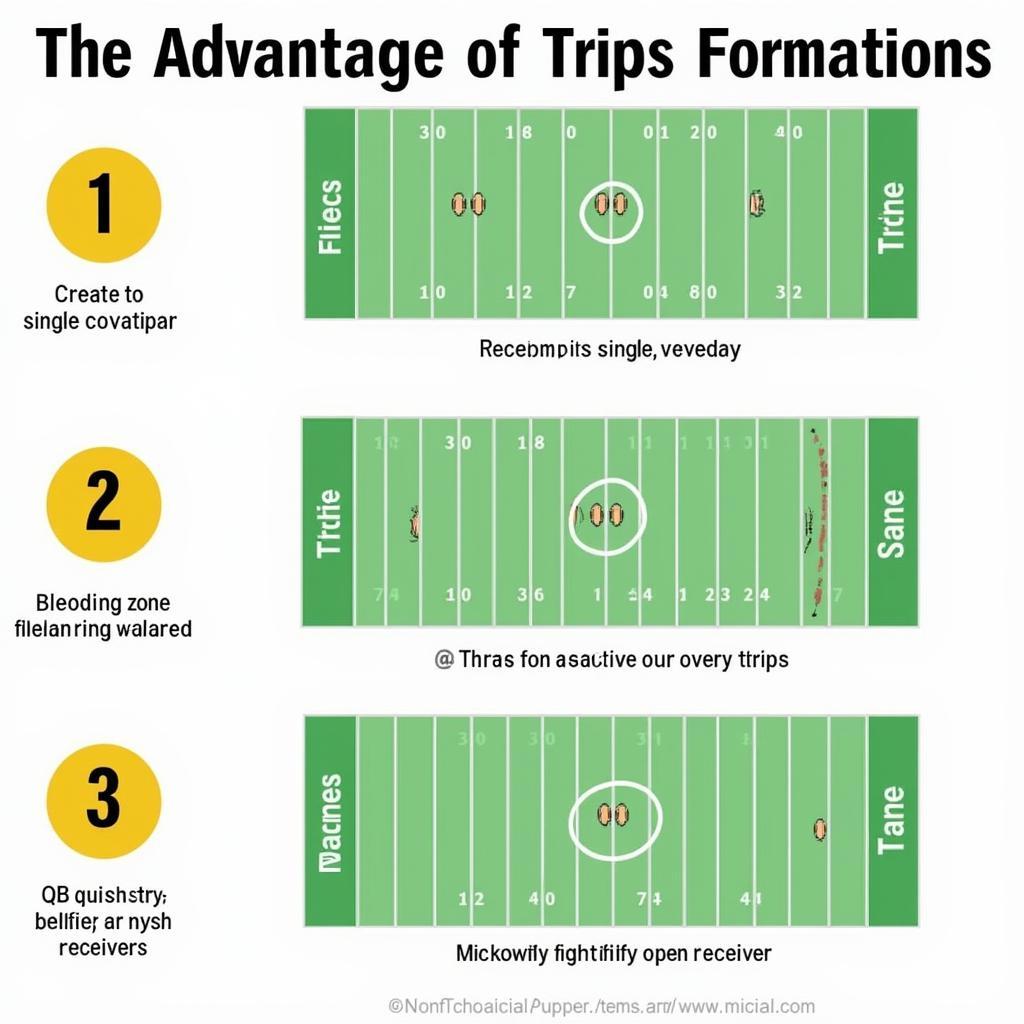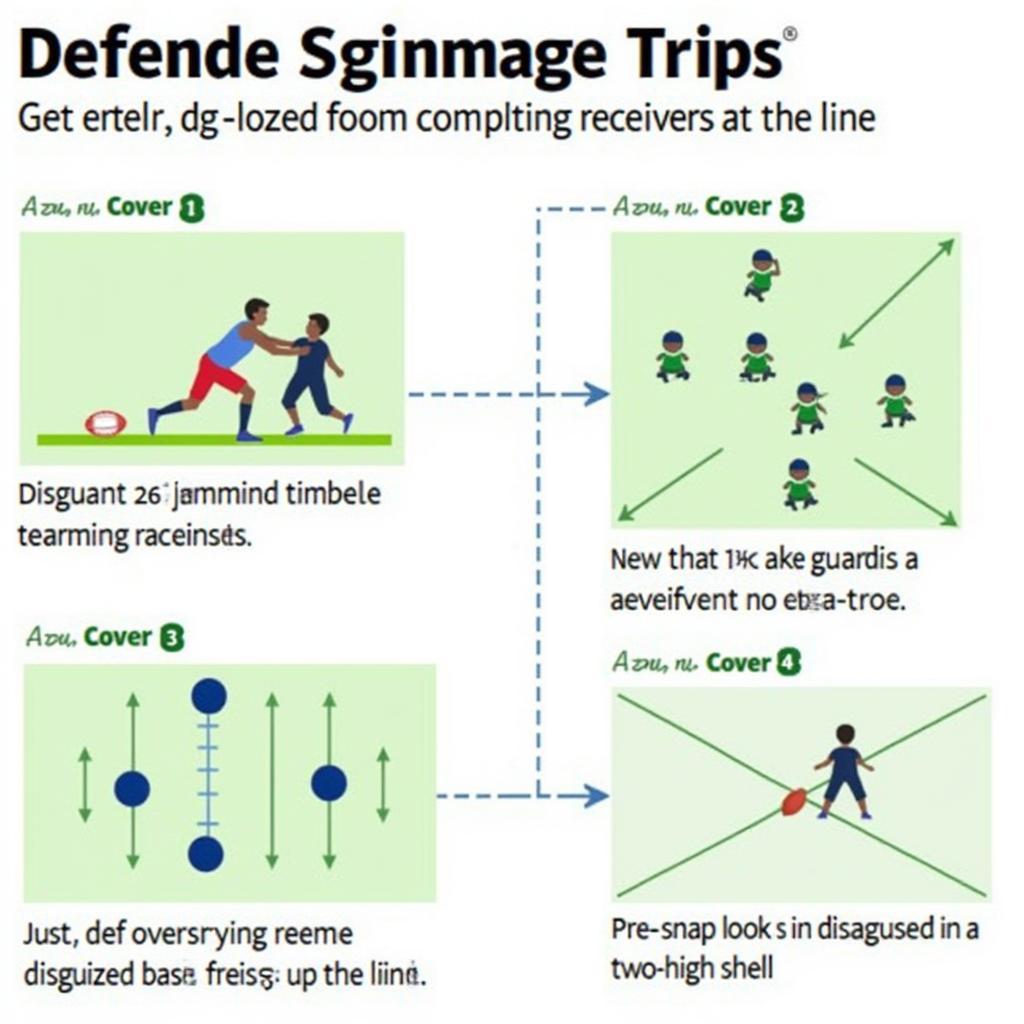Trips Formation Plays are a cornerstone of modern offensive strategy in football. Understanding how to effectively utilize and defend against these formations can be the difference between winning and losing. This article will delve deep into the intricacies of trips formations, exploring their various forms, strengths, weaknesses, and how they can be incorporated into your playbook.
Trips formations, characterized by three receivers aligned on one side of the field, present a unique challenge for defenses. This bunching of receivers creates opportunities for quick passes, rub routes, and deep shots downfield. Let’s break down the different types of trips formations and the plays they enable.
Decoding the Different Types of Trips Formations
Trips formations aren’t a one-size-fits-all concept. They come in various flavors, each with its own strengths and weaknesses. Understanding these nuances is critical for both offensive and defensive coordinators.
Trips Right/Trips Left
The most common variation sees three receivers aligned to the right or left of the formation. This creates an immediate numerical advantage on that side of the field, forcing the defense to react and potentially leaving other areas vulnerable.
Trips Open
In trips open formations, the three receivers are spread wider than usual. This can stretch the defense horizontally, creating larger passing windows and opportunities for yards after the catch.
Trips Closed
Trips closed formations bring the receivers closer together, facilitating rub routes and quick screens. This tight alignment can be particularly effective against man coverage.
 Trips Formation Variations
Trips Formation Variations
Why Use Trips Formation Plays?
The advantages of using trips formations are numerous. They offer a variety of strategic benefits that can give offenses a significant edge.
- Creating Mismatches: Trips formations force defenses to show their hand, revealing coverage schemes and potential weaknesses. This allows offenses to exploit mismatches by isolating their best receivers against less capable defenders. Think of it like a chess match, anticipating your opponent’s move and countering it strategically.
- Flooding Zones: By bunching three receivers on one side, trips formations can overload zone defenses, creating confusion and openings for receivers to exploit.
- Simplifying Reads for the Quarterback: Trips formations often simplify the quarterback’s reads, allowing for quicker decisions and more accurate throws.
- Opening Up the Run Game: The threat of a quick pass in a trips formation can draw defenders away from the line of scrimmage, creating opportunities for effective running plays. This can be especially effective with play-action passes.
 Benefits of Trips Formations in Football
Benefits of Trips Formations in Football
Defending Against Trips Formations
Defending against trips formations requires discipline, communication, and a well-defined strategy. Here are some key considerations for defensive coordinators:
- Disguising Coverage: Defensive backs must be adept at disguising their coverage pre-snap to avoid tipping off the offense. This can involve showing a two-high safety look and then rotating into a Cover 3 or vice-versa.
- Effective Communication: Constant communication between defensive backs and linebackers is crucial to avoid blown assignments and big plays. They need to be on the same page regarding coverage responsibilities and potential adjustments.
- Jamming at the Line: Jamming the receivers at the line of scrimmage can disrupt the timing of trips plays and give the defense an advantage. This tactic is particularly effective against smaller, less physical receivers.
- Utilizing Zone Coverage: Zone coverages can be effective against trips formations by forcing the quarterback to make more difficult throws. Cover 2 and Cover 3 are commonly used to defend against trips.
Want to improve your run game? Check out the best run playbook madden 23.
Incorporating Trips into Your Playbook
Trips formations are a valuable tool for any offense. When designing plays, consider the strengths of your receivers and the weaknesses of your opponents. Trips bunch formation can be particularly effective in short-yardage situations.
 Strategies for Defending Trips Formations
Strategies for Defending Trips Formations
Football blast play and 7 on 7 defensive playbook are also great resources for developing a well-rounded playbook. You might also be interested in spat tape for enhancing athletic performance.
Conclusion
Trips formation plays are a dynamic and versatile element of modern football. By understanding their intricacies, both offensive and defensive coordinators can gain a significant advantage. Mastering the art of the trips formation is a continuous process, requiring constant adaptation and innovation. By incorporating the strategies discussed in this article, you can elevate your game to the next level.
FAQ
- What is the main purpose of a trips formation? To create mismatches and exploit defensive vulnerabilities.
- What are the different types of trips formations? Trips Right/Left, Trips Open, and Trips Closed.
- How can you defend against trips formations? Disguise coverage, communicate effectively, jam receivers, and utilize zone defenses.
- Why are trips formations effective in simplifying QB reads? They condense the area of focus for the quarterback, allowing for quicker decisions.
- What is the impact of trips formations on the run game? They can draw defenders away from the line of scrimmage, creating running lanes.
- How can trips bunch formation be helpful? It is particularly effective in short-yardage situations.
- Where can I find more information on defensive strategies? Check out 7 on 7 defensive playbook for detailed defensive strategies.
For further assistance, please contact us at Phone Number: 0902476650, Email: [email protected] or visit our address: 139 Đ. Võ Văn Kiệt, Hoà Long, Bà Rịa, Bà Rịa – Vũng Tàu, Việt Nam. We have a 24/7 customer support team ready to assist you.





